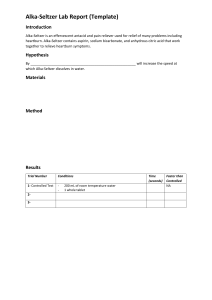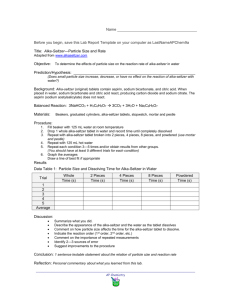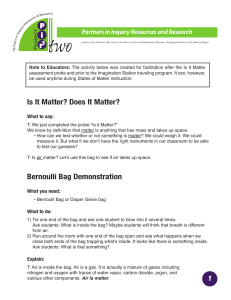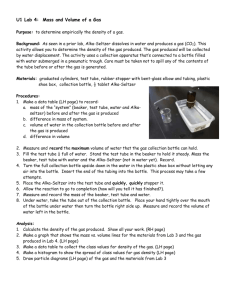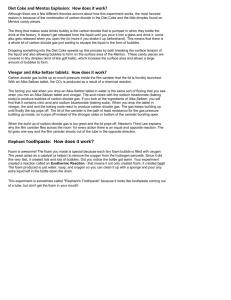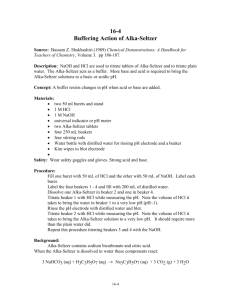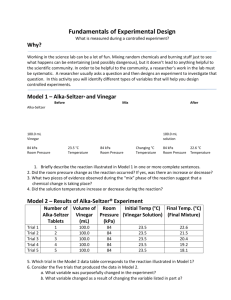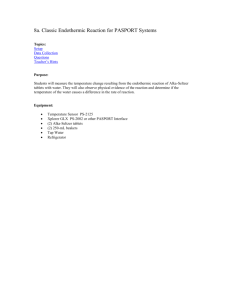Lava Lamp
advertisement
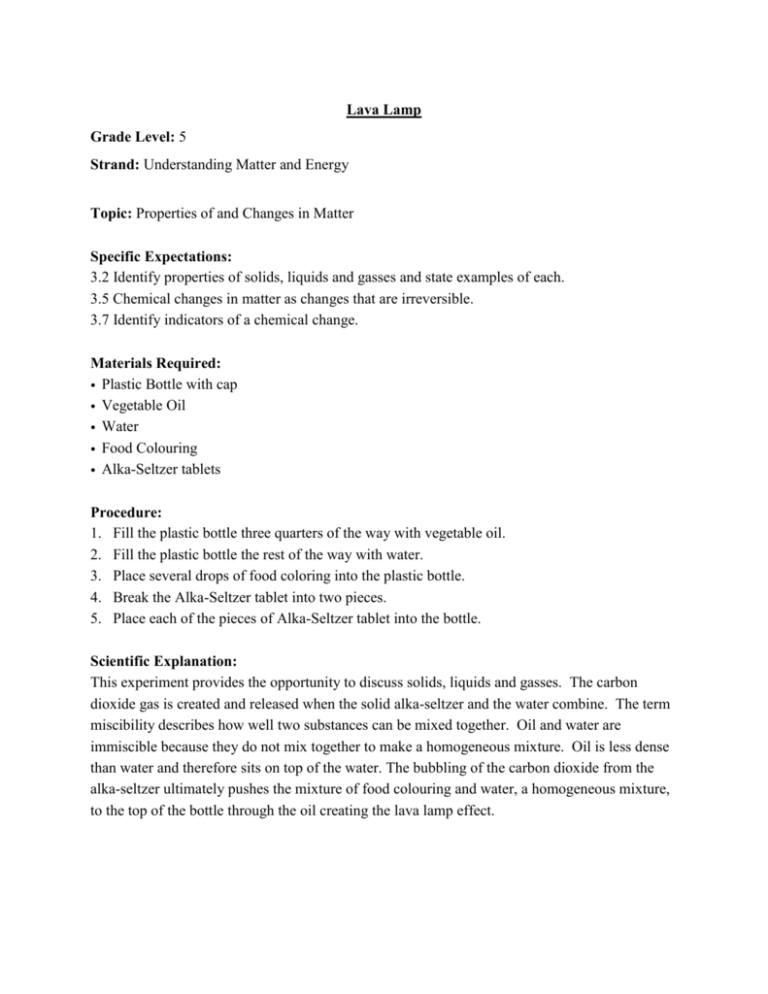
Lava Lamp Grade Level: 5 Strand: Understanding Matter and Energy Topic: Properties of and Changes in Matter Specific Expectations: 3.2 Identify properties of solids, liquids and gasses and state examples of each. 3.5 Chemical changes in matter as changes that are irreversible. 3.7 Identify indicators of a chemical change. Materials Required: • Plastic Bottle with cap • Vegetable Oil • Water • Food Colouring • Alka-Seltzer tablets Procedure: 1. Fill the plastic bottle three quarters of the way with vegetable oil. 2. Fill the plastic bottle the rest of the way with water. 3. Place several drops of food coloring into the plastic bottle. 4. Break the Alka-Seltzer tablet into two pieces. 5. Place each of the pieces of Alka-Seltzer tablet into the bottle. Scientific Explanation: This experiment provides the opportunity to discuss solids, liquids and gasses. The carbon dioxide gas is created and released when the solid alka-seltzer and the water combine. The term miscibility describes how well two substances can be mixed together. Oil and water are immiscible because they do not mix together to make a homogeneous mixture. Oil is less dense than water and therefore sits on top of the water. The bubbling of the carbon dioxide from the alka-seltzer ultimately pushes the mixture of food colouring and water, a homogeneous mixture, to the top of the bottle through the oil creating the lava lamp effect. Chemical changes can also be discussed due to the fact that the alka-seltzer changes its state of matter from a solid to a gas and is done so through a chemical change that is irreversible. We know this because it is impossible to change the carbon dioxide back into the solid alka-seltzer. Indicators of a chemical change can also be introduced to students. These indicators include the production of a gas, change in colour or formation of precipitate. It is evident that a chemical reaction occurred because the mixture of water and the alka-seltzer resulted in the production of carbon dioxide gas. References: http://www.hookedonscience.org/lavalamp.html Canada. Ministry of Education. Science and Technology: The Ontario Curriculum Grades 1-8. Queens Printer, 2007. Print. Amy Edwardson and Jenna Cousins


